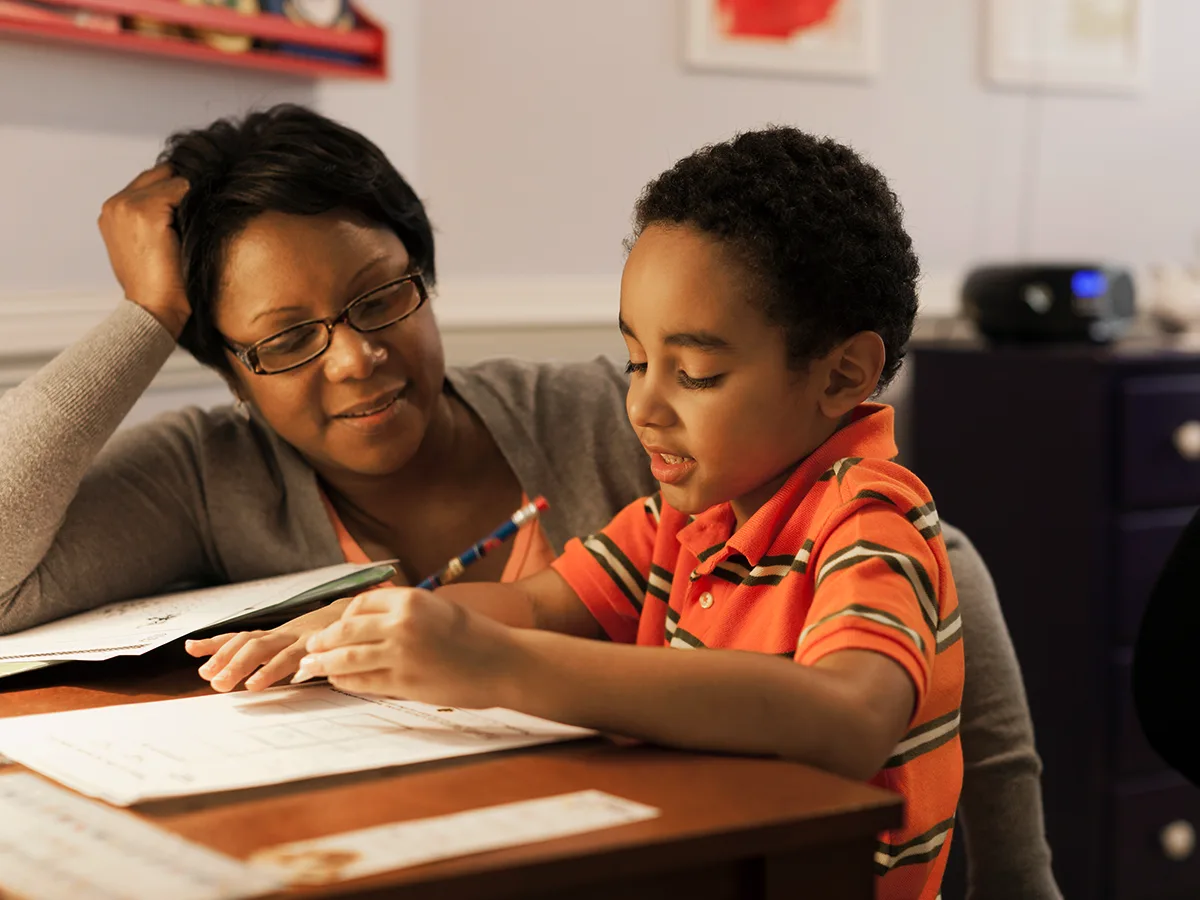Fact fluency: An evidence-based math strategy

Fact fluency is a foundational math skill that means mastering sums between 0–20 so students can produce the answers quickly and accurately. For example, with addition fact fluency, students can recall 1 + 4 = 5 without hesitation.
But building fact fluency isn’t just about flashcards and drills. Students need to understand what they’re doing, not just memorize it. And they need to practice computing to get more efficient at it. That’s why building fact fluency is an important step toward thinking about math more critically.
Games like addition bingo can be a fun way for students to practice math facts, both in school and at home. With addition bingo, students roll two dice to practice adding sums up to 12. They add the numbers on the dice together and look for the sum on their bingo boards.
Students who are ready to play bingo with sums up to 20 can draw from two piles of index cards numbered 0–10 and add those numbers together.
Download: Printable addition bingo boards
Addition bingo (3x3)PDF - 27.7 KB
Addition bingo (5x5)PDF - 28.0 KB
Read: How to use this fact fluency strategy
Objective: Students will build retention of addition facts by playing bingo.
Grade levels (with standards):
1 (Common Core 1.OA.C.5 Relate counting to addition and subtraction, e.g., by counting on 2 to add 2.)
1 (Common Core 1.OA.C.6 Add and subtract within 20, demonstrating fluency for addition and subtraction within 10.)
2 (Common Core 2.OA.B.2 Fluently add and subtract within 20 using mental strategies. By end of Grade 2, know from memory all sums of two one-digit numbers.)
Best used for instruction with:
Whole group
Small groups
How to prepare:
Group students. Identify students who will play the game together. Use pairs or groups to keep the game moving quickly.
Gather and prepare materials. Print one 3×3 bingo board for each student or have them draw their own on large grid paper. Give each group of students two six-sided dice and a pile of bingo chips, counters, coins, or tiles to cover up the numbers on their boards as they play.
Show students how to choose numbers from 1–12 to fill their bingo boards in random order. Make sure students know to use each number only once on the 3×3 board and that three numbers will be leftover. It helps if students write the numbers on the top of the board and cross them out as they use each one. Demonstrate with a document camera or a large version of the board.
Teaching tip: Print the bingo boards on card stock and laminate them so they can be reused. Have students use whiteboard markers to write the numbers.
How to teach:
1. Explain the directions. Let students know that today they’ll practice adding numbers by playing bingo. Say, “Each group has a set of dice and some chips to mark off their sums. Take turns rolling the two dice and adding the two numbers. Everyone in the group should check the roller’s work by counting the dots on the dice. If the sum of the two dice is on your board, you place a chip on it. The first student in the group to complete a row, column, or diagonal line says “Bingo!”
2. Model an example. Roll the two dice. Make sure students can see the numbers on the dice by either using a document camera or large foam dice. Think out loud: “A three and a five. Three plus five equals eight.” Provide a visual by writing the number sentence 3 + 5 = 8 for everyone to see. Ask, “Remember, everyone in the groups should check the roller’s work. Can someone check that for me?” Ask a student volunteer to check your work. Then circle the sum and show students how you search your bingo board for “8” and place a chip on it if you find it. Remind students that depending on the numbers they used, their board may not have the sum on it.
Now ask the same volunteer to roll the two dice. Let the student find the sum while you model checking the answer. This time say, “If you’re having trouble thinking of the answer, use the counting on strategy to prove the sum.” Walk through an example by identifying the number that is greater, then counting on the additional dots from the second die to get the sum.
3. Practice. Set a timer for 10–15 minutes. Let students play against their partner or group members as you move around the room. Observe students practicing their math facts. For those making errors, prompt them to use the counting on strategy. Most groups will play a few rounds before the time is up.
Teaching tip: Make a simple chart to keep track of student progress as you observe. For example, list students’ names and create columns for if they know their facts within 5, 10, and 20. Use a column for notes about the support students might need.
4. Wrap up. When the timer goes off, stop the game and reflect. Using a system of thumbs up, thumbs in the middle, or thumbs down, ask students to rate how well they know their addition facts up to 12. Take note of the students whose self-reflection seems far off from what you observed. If there’s time, have students switch partners and play another round or two.
5. Provide differentiated levels of support. Some students may be ready for addition facts up to 20. Others may need the support of counting on the dice. Consider grouping students based on their current level of progress.
For students having trouble recalling their addition facts for sums 2–12, give them oversized dice to make it easier for them to count the dots. You can also give them large print number lines to help them with counting on.
For English language learners and other students who benefit from visual supports, provide an anchor chart with the number names, the written numerals, and a visual representation of the quantities so they can connect all three together as they play.
For students ready to extend their practice, use the 5×5 bingo board and have students fill it with numbers from 0–20. Make sure students know they’ll need to use three numbers twice. Create sets of index cards numbered 0–10. Each pair or small group will get two sets of 11 cards, one for each addend. As the students take turns, they select one card from each pile and calculate the sum. After the other students confirm it’s correct, they each search their boards for the number. (If available, you could use two 10-sided dice instead of index cards.)
Understand: Why this strategy works
Fact fluency makes all other math problems easier — especially those with multiple steps — because students need to rely less on their working memory. When students can recall facts and do quick computation, they can focus on critical information and procedures. Otherwise, they get slowed down by basic calculations.
Many students, particularly students who learn and think differently, have trouble remembering math facts. That’s why the right kind of repeated practice is so important.
Research shows that as students become more accurate with math facts and strengthen their computational fluency, they improve their ability to problem-solve in math. Playing games is an engaging way for students to build this fluency. Games give students practice with recalling math facts and thinking flexibly to solve problems.
With addition bingo, students roll the dice to create their own math problems and easily check their work. This gives teachers time to observe, measure progress, and work with students who need more support.
Connect: Link home to school
Playing addition bingo at home will help students practice their addition facts. Explain to families why it’s so important to strengthen their child’s fact fluency. Send home a sample bingo board (digital or paper) with the directions. See below for suggestions for bingo chips.
Research behind this strategy
“Enriching addition and subtraction fact mastery through games,” from Teaching Children Mathematics



